| Tomato plants have yellow flowers that, in full bloom, are generally less than an inch in diameter. The flowers can occur in a simple or a complex inflorescence. The diagram to the right depicts a typical inflorescence. |
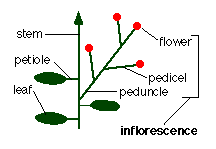
|
| There are different types of inflorescences. To the right, two types have been shown. A raceme inflorescence is one in which the flowers branch off laterally from a main shoot that grows indefinitely. In a cyme inflorescence, the shoot apex differentiates into a flower, subsequent growth occurs due to activity in an axillary branch which will eventually terminate in a flower. |
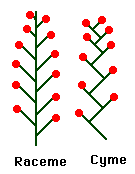
|
| The tomato flower occurs in the three organizational patterns drawn below. Simple flowers can appear as well as simple cymes and branched cymes. The number of flowers that occur in an inflorescence is dependent upon environmental factors such as temperature. | |
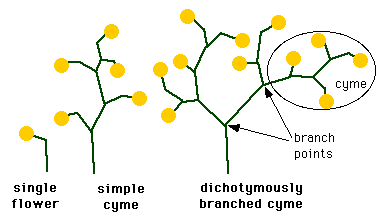
|
|
| Line drawings by David Van Tassel | |
| If we take a look at a longitudinal section through a tomato flower we can see that the tomato flower is organized in four whorls of organs which are labelled below. The pedicel is the stem that supports the flower. | |
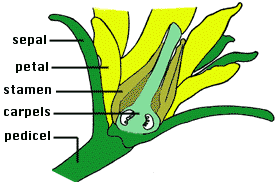
|
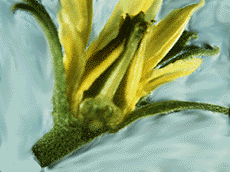
|
| The outermost whorl consists of the sepals. Collectively, the sepals are called the calyx. |
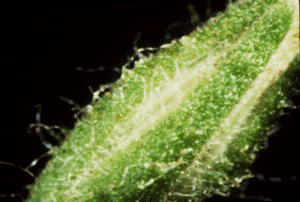
|
| The next whorl, the bright yellow petals, serves to attract pollinators. Together, the petals are called the corolla. |

|
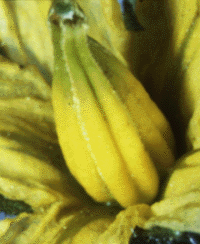
|
The male reproductive organs, the stamens, which house pollen production, sit inside the petals. A single tomato stamen consists of two elongated compartments. The individual stamens are fused together to form a yellow cylinder that surrounds the carpels. |
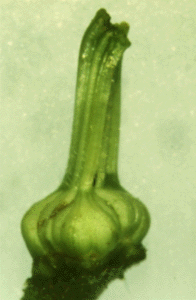
|
The tomato carpels are green. They vary in number from cultivar to cultivar, but they are invariably fused together into a single bulb-like structure. The number of carpels in the tomato flower corresponds to the number of locules found in the fruits. The carpels are where fertilization takes place. The ovules which will develop into seeds are protected in the carpel. |